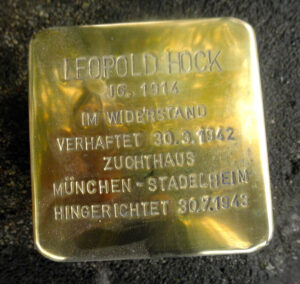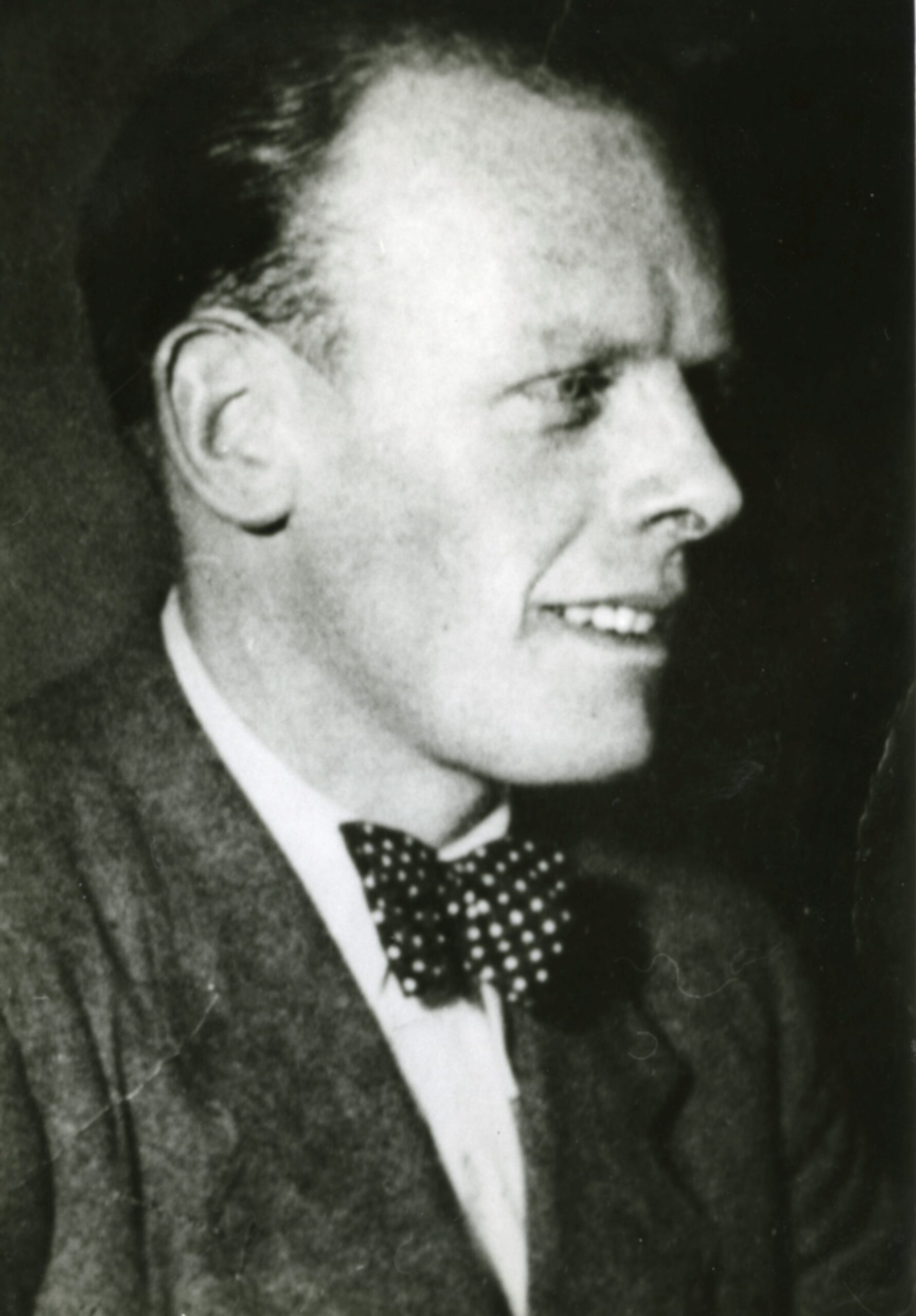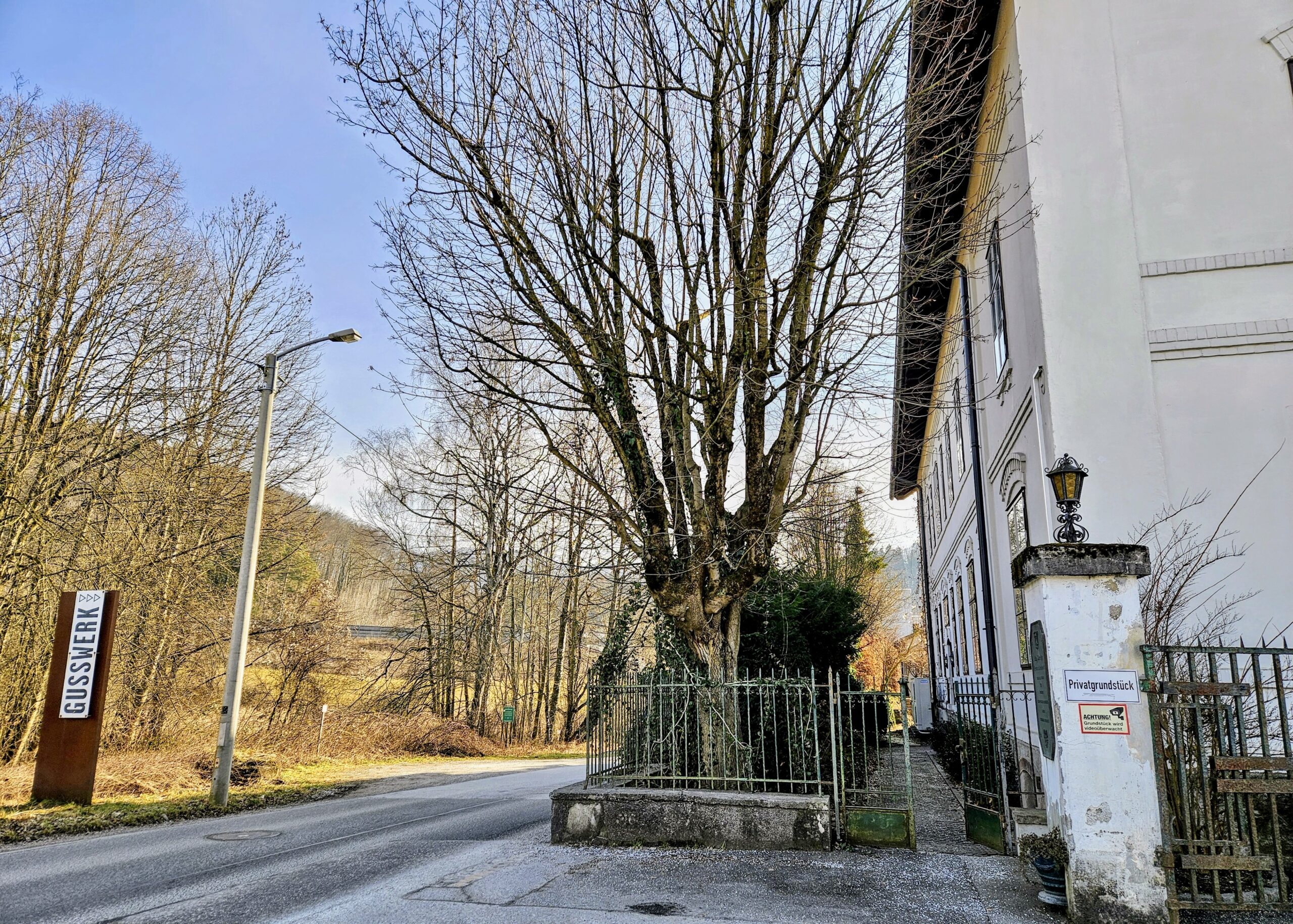Leopold HOCK, born on March 28, 1914 in Itzling near Salzburg, was the youngest child of a social-democratic working-class family which, according to Austrian law, was entitled to reside in the municipality of Gnigl, to which Itzling also belonged, and lived in the house at Itzlinger Hauptstraße 41.
Leopold learned the trade of locksmith, was an active member of the Children’s and Nature Friends, the Red Falcons, the Workers’ Gymnastics and Sports Club and the Republican Protection League until they were crushed by the Austrian dictatorship in February 1934. Gnigl and Itzling became districts of Salzburg in 1935.
Under the Nazi regime, Leopold HOCK belonged to the resistance movement of the illegal Communist Party of Austria (KPÖ), which was reactivated in Salzburg along the branched railroad lines by Franz OFNER and Anton REINDL, former Social Democrats who also lived in Itzling.
Hardly surprisingly, the formerly Social Democratic communities of Gnigl, Itzling and Maxglan had the most active Communist local groups. The Itzling local group was headed by Josef WARTINGER, former Social Democrat and Schutzbund leader of Itzling.
Leopold HOCK, now married, was treasurer and cell leader in Itzling. He worked as a locksmith at the Oberascher armaments factory in Kasern and moved into an official apartment there at the beginning of 1942.2 His wife Therese was pregnant. On March 31, 1942, about six weeks before the birth of their child, HOCK was arrested by the Gestapo in Kasern.
At the beginning of the war year 1942, the Gestapo, with the help of an undercover investigator, had succeeded in breaking up the resistance networks of the Communists and Socialists.
At least 79 activists, including 29 railroad workers from the two resistance organizations, the KPÖ and the RSÖ, in the city and the countryside perished in concentration camps or penitentiaries.
It is hardly known that the criminal trial of the 1st Senate of the »People’s Courtq against defendants of the communist local groups Itzling and Maxglan, originally scheduled for December 1942, took place on March 2 and 3, 1943, in the jury courtroom of the Salzburg Regional Court.
The »People’s Court Councilor« Paul Lämmle, who was regarded as a fanatical anti-communist and who, as is well known, acted as Roland Freisler’s »second man« in a number of trials of the 1st »Blood Senate«, was the chairman of the Salzburg trial.
It is also noteworthy that NSDAP local group leader Johann Hofer from Itzling appeared as a witness at the main trial, where he proclaimed the view that the defendants were incorrigible communists and therefore deserved no other punishment than the death penalty.2
This is also how the short trial ended: The 1st Senate of the »People’s Court« under Lämmle’s chairmanship passed death sentences on March 3, 1943 on six functionaries of the communist local groups Itzling and Maxglan, Rudolf HARTL, Leopold HOCK, Josef THALHAMMER and Josef WARTINGER, Rudolf SMOLIK and Josef Hofkirchner, who »favored the enemy of the Reich during the war« by »organizationally preparing communist treason«.
One of the six death candidates was pardoned to 12 years in prison after a plea for clemency by the Reich Governor of Salzburg, Gustav Adolf Scheel: the shoemaker Josef Hofkirchner, who survived the terror years, headed the housing office of the city of Salzburg and died here in 1980.
The pardon application of the young wife and mother Therese Hock, on the other hand, found no support.
On July 30, 1943, Leopold HOCK, aged 29, Rudolf HARTL, aged 33, Josef THALHAMMER, aged 40, Rudolf SMOLIK, aged 41, and Josef WARTINGER, aged 46, who had been sentenced to death in Salzburg, were put to death with the guillotine in Munich-Stadelheim.
Leopold HOCKs parents and siblings, his widowed wife and their son Leopold lived to see the liberation of Salzburg. As a survivor in liberated Austria, Leopold Jr. was entitled to victim welfare.
On the initiative of the Salzburg Provincial Association of Austrian Concentration Campers, Prisoners and Politically Persecuted Persons, the decapitated comrades Franz ASCHENBERGER, Josef HAIDINGER, Rudolf HARTL, Leopold HOCK, Franz PÖTTINGER, Josef THALHAMMER and Josef WARTINGER were exhumed in the Forest Cemetery in Munich-Perlach and buried in a ceremony on November 1, 1950 in the Municipal Cemetery in Salzburg with the participation of the priest Franz Dürnberger.
The proposal of the Anti-Fascist Persons Committee in the »Year of Remembrance« 1988 to name a public road after Leopold HOCK in Salzburg was forgotten.
1 The victims of Nazi terror at the Oberascher armaments factory also include the accountant Ferdinand LANG (beheaded in Munich-Stadelheim on November 21, 1944), the guard Friedrich FIMBERGER (murdered in the Dachau concentration camp on February 25, 1945), the kitchen manager Viktor TODERO (persecuted for his sexual orientation, murdered in Mauthausen on June 23, 1944), and at least eight forced laborers, including Alexander DUBINA, Rawis PLACHE, who were liquidated by the Gestapo in the yard of the armaments factory. June 1944 in Mauthausen) and at least eight forced laborers, among them Alexander DUBINA, Rawis PLACHE, Vladimir SLESAROV and Leonid STEPANOV, who were liquidated by the Gestapo in the yard of the armament factory on August 20, 1943.
2 Johann Hofer, who as NSDAP local group leader of Itzling appeared as a witness in the trial of the »People’s Court« in Salzburg on March 3, 1943 against four communists from Itzling, was according to the investigations of the Austrian State Police also present as »guest of honor« at the execution of four Ukrainian forced laborers, which took place on August 20, 1943 in the yard of the Oberascher armaments factory.
It is also known that the shoemaker Rudolf BEER, who lived in Itzling, was arrested by the Gestapo at the instigation of the local group leader Johann Hofer, deported to the Mauthausen concentration camp and murdered there.
As a result of denunciations, several people from the Itzling district were deported by the Gestapo to various concentration camps, for example Mrs. Elise Kaindl, who survived the Ravensbrück concentration camp, returned and found that her apartment had been completely cleared out – also at the instigation of the local group leader Hofer, as can be seen from a police record.
Hofer, temporarily interned in the U.S. internment camp Camp Marcus W. Orr (»Glasenbach«) after the liberation of Salzburg, was sentenced to ten years of heavy imprisonment in December 1948 under the Austrian War Crimes Act, pardoned in the early 1950s, released and employed by the Salzburg AG für Energiewirtschaft (SAFE).
He died in Salzburg in 1979.
Sources
- City and Provincial Archives Salzburg
- Documentation Center of the Austrian Resistance (DÖW)
Translation: DeepL
Stumbling Stone
Laid 24.10.2014 at Salzburg, Söllheimer Straße 16 (Gusswerk, Kasern)






